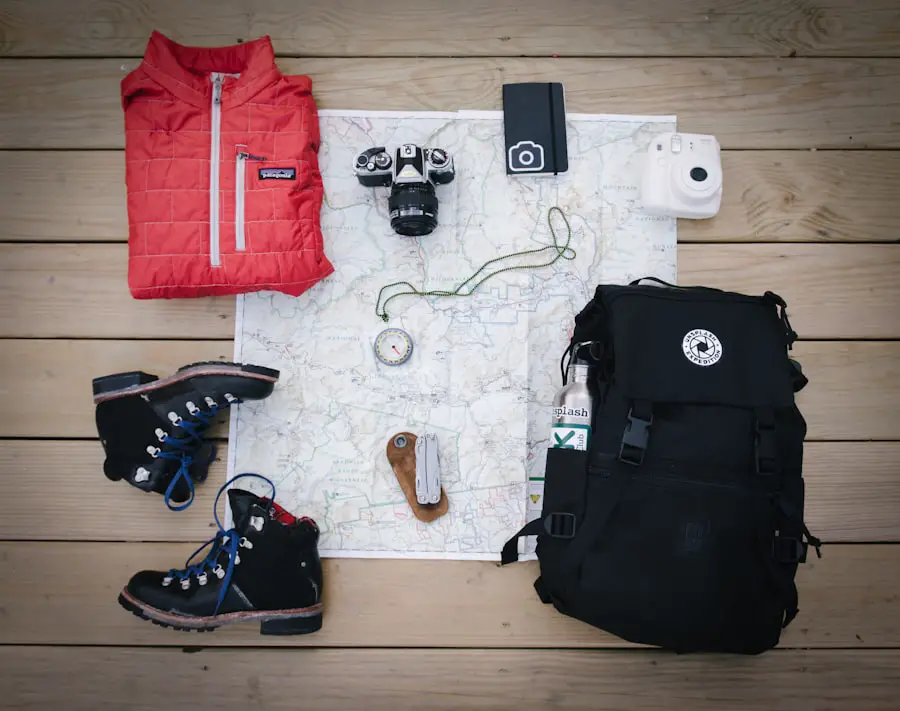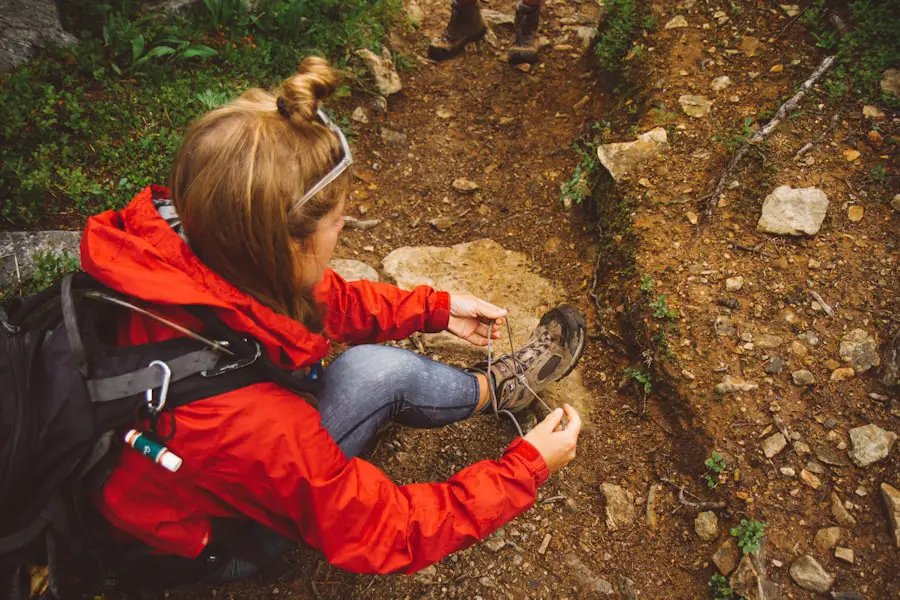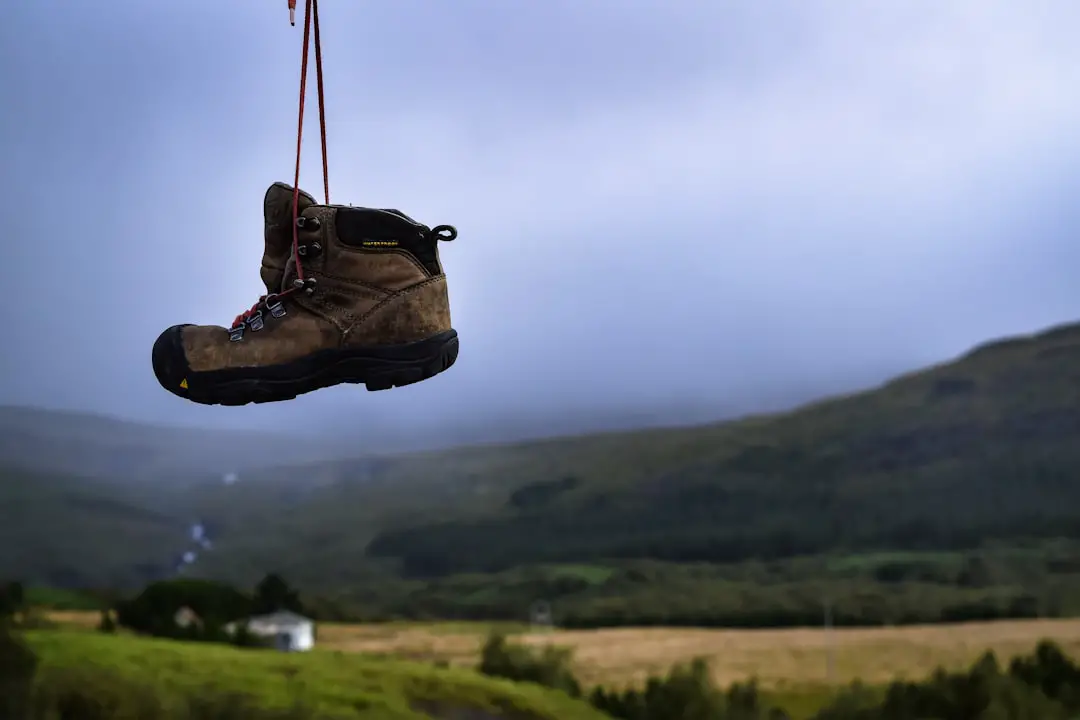Rattlesnakes, belonging to the family Viperidae, exhibit a range of behaviors that are crucial for their survival and interaction with their environment. These reptiles are primarily crepuscular, meaning they are most active during the twilight hours of dawn and dusk. This behavior is an adaptation that helps them avoid the heat of the day and reduces their visibility to both predators and prey.
Understanding this aspect of rattlesnake behavior is essential for hikers, as it informs the best times to venture into their habitats. During these active periods, rattlesnakes may be found basking on warm rocks or moving through their territory in search of food, which typically consists of small mammals, birds, and occasionally other reptiles. Moreover, rattlesnakes are known for their defensive behaviors.
When threatened, they often rely on their distinctive rattle as a warning signal. This sound serves as an auditory cue to potential threats, signaling that they are prepared to defend themselves if necessary. However, it is important to note that not all rattlesnakes will rattle before striking; some may choose to remain silent and strike without warning if they feel cornered.
This unpredictability underscores the importance of maintaining a safe distance from these snakes and respecting their space in the wild. By understanding these behavioral patterns, hikers can better navigate environments where rattlesnakes are present and minimize the risk of an encounter.
Key Takeaways
- Rattlesnakes are most active during the warmer months and tend to avoid confrontation with humans if given the chance.
- Proper hiking gear includes sturdy boots, long pants, and a walking stick to help detect and deter snakes.
- Staying on designated trails reduces the risk of encountering a rattlesnake and helps protect their natural habitat.
- Always be aware of your surroundings, especially in rocky or brushy areas where rattlesnakes may be hiding.
- If you encounter a rattlesnake, remain calm, slowly back away, and give the snake plenty of space to retreat.
Choosing the Right Hiking Gear
Selecting appropriate hiking gear is paramount for ensuring safety and comfort while exploring areas inhabited by rattlesnakes. Sturdy, high-top hiking boots are essential; they provide ankle support and protection against potential snake bites. Leather or thick synthetic materials can offer an additional layer of defense against fangs, should an encounter occur.
Additionally, wearing long pants made from durable fabric can help shield your legs from both snake bites and thorny underbrush. Opting for light-colored clothing can also enhance visibility in low-light conditions, making it easier to spot snakes that may be camouflaged against the ground. In addition to footwear and clothing, carrying essential gear such as a first aid kit is crucial.
A well-stocked first aid kit should include items like antiseptic wipes, bandages, and a snake bite kit if available. While snake bite kits are often debated in terms of their effectiveness, having basic first aid supplies can be invaluable in case of an emergency. Furthermore, a reliable hiking stick can serve multiple purposes: it can help you navigate uneven terrain, test the ground ahead for hidden snakes, and even act as a barrier between you and a snake if necessary.
By carefully selecting your hiking gear, you can enhance your safety and enjoyment while exploring rattlesnake habitats.
Staying on Designated Trails

One of the most effective ways to minimize encounters with rattlesnakes is to stay on designated trails while hiking. These paths are typically cleared of dense vegetation and provide a safer route through natural areas. Rattlesnakes often prefer to inhabit areas with ample cover, such as tall grass, brush, or rocky outcrops where they can hide from predators and ambush prey.
By sticking to established trails, hikers reduce the likelihood of inadvertently disturbing a snake’s resting place or stepping on one that is camouflaged in the underbrush. Moreover, designated trails are often maintained by park services or local hiking organizations, which means they are regularly monitored for safety hazards. This maintenance includes removing debris and ensuring that the trail remains clear of obstacles that could pose risks to hikers.
Staying on these paths not only protects you from potential snake encounters but also helps preserve the surrounding ecosystem by minimizing human impact on sensitive habitats. By respecting trail boundaries, hikers contribute to conservation efforts while enhancing their own safety during outdoor adventures.
Keeping a Close Eye on Your Surroundings
| Location | Time | Activity |
|---|---|---|
| Home | Daytime | Checking windows and doors |
| Workplace | Throughout the day | Observing co-workers and surroundings |
| Public places | When in crowded areas | Being aware of exits and emergency procedures |
Maintaining awareness of your surroundings is critical when hiking in areas known to be inhabited by rattlesnakes. This vigilance involves more than just scanning the ground for snakes; it also includes being mindful of your environment as a whole. Pay attention to changes in terrain, vegetation density, and any sounds that may indicate wildlife activity.
For instance, if you hear rustling in the bushes or notice movement out of the corner of your eye, it’s wise to pause and assess the situation before proceeding. Additionally, using your senses can significantly enhance your ability to detect rattlesnakes before they become a threat. The distinctive rattle sound is often the first warning hikers receive; however, it’s not always audible if the snake is startled or feels threatened.
Therefore, being observant can help you spot a snake basking in the sun or coiled up in a shaded area before you get too close. When hiking with companions, communicate regularly about what you see and hear; this collective awareness can further reduce the risk of an unexpected encounter with a rattlesnake.
Knowing What to Do If You Encounter a Rattlesnake
Encountering a rattlesnake can be a startling experience, but knowing how to react can significantly reduce the risk of injury. The first step is to remain calm; panicking can lead to hasty movements that may provoke the snake. If you spot a rattlesnake on or near your path, stop immediately and assess the situation.
Most rattlesnakes will not strike unless they feel threatened or cornered. Therefore, giving the snake space is crucial; back away slowly while keeping your eyes on the snake until you are at a safe distance. If you find yourself in a situation where a rattlesnake is blocking your path and you cannot safely retreat, consider using a hiking stick or another object to gently encourage it to move away.
Do not attempt to handle or provoke the snake; this can lead to bites and serious injury. Instead, wait patiently for the snake to slither away on its own accord. In some cases, it may take several minutes for the snake to leave its resting spot; however, patience is key in these situations.
Understanding Rattlesnake Habitats

Rattlesnakes thrive in diverse habitats across North America, ranging from deserts and grasslands to forests and rocky hillsides. Each species has its preferred environment that provides adequate shelter and food sources. For instance, the Western Diamondback Rattlesnake is commonly found in arid regions with sparse vegetation, where it can easily blend into its surroundings while hunting for small mammals.
In contrast, the Timber Rattlesnake prefers wooded areas with ample cover from foliage and logs. Understanding these habitats is essential for hikers who wish to avoid encounters with rattlesnakes. Familiarizing yourself with the specific types of environments where rattlesnakes are likely to be found can help you plan your hikes more effectively.
For example, avoiding dense underbrush or rocky outcrops during peak activity times can significantly reduce your chances of an encounter. Additionally, recognizing signs of rattlesnake presence—such as shed skins or tracks—can further inform your decisions while navigating through their habitats.
Hiking During the Right Time of Day
Timing your hikes can play a significant role in minimizing encounters with rattlesnakes. As mentioned earlier, these reptiles are primarily crepuscular creatures, meaning they are most active during dawn and dusk when temperatures are cooler. Therefore, planning hikes during mid-morning or early afternoon hours can reduce the likelihood of encountering them when they are out hunting or basking in the sun.
However, it’s important to consider seasonal variations as well. During warmer months, rattlesnakes may become more active during cooler parts of the day but retreat to shaded areas as temperatures rise. Conversely, in cooler seasons, they may be less active overall but still emerge during sunny days for warmth.
Understanding these patterns allows hikers to choose optimal times for their outdoor activities while minimizing risks associated with rattlesnake encounters.
Properly Storing Food and Trash
When hiking in areas inhabited by rattlesnakes and other wildlife, proper food storage and trash disposal are essential practices that contribute to safety and environmental conservation. Leaving food scraps or improperly stored food items can attract various animals, including snakes looking for easy meals. Rattlesnakes may be drawn to areas where small mammals congregate due to food waste left behind by hikers.
To mitigate this risk, always pack out what you pack in—this includes any food wrappers or leftover snacks. Use bear-proof containers or tightly sealed bags when storing food during hikes or camping trips. Additionally, avoid cooking or eating near your campsite if possible; this practice not only keeps your area clean but also reduces odors that might attract wildlife.
By being conscientious about food storage and trash disposal, hikers can help maintain a safe environment for themselves and local wildlife alike.
Keeping Pets on Leashes
Pets can add joy to outdoor adventures; however, they also pose unique challenges when hiking in areas where rattlesnakes may be present. Dogs, in particular, have a natural curiosity that can lead them into dangerous situations if allowed to roam freely. A dog’s instinctual behavior may cause it to approach or provoke a rattlesnake out of curiosity or playfulness—this can result in serious injuries for both the pet and its owner.
To ensure safety for all involved, keeping pets on leashes is crucial when hiking in rattlesnake habitats. A leash allows you greater control over your pet’s movements while providing an opportunity to redirect them away from potential dangers. Additionally, consider using a harness instead of a collar for better control over larger dogs that may pull or lunge unexpectedly.
Training your pet to respond to commands such as “leave it” or “come” can also enhance safety during hikes by allowing you to manage their behavior effectively.
Educating Yourself on First Aid for Snake Bites
While taking precautions can significantly reduce the risk of encountering rattlesnakes, it’s still essential for hikers to be prepared for emergencies such as snake bites. Educating yourself about first aid procedures specific to snake bites is vital knowledge that could save lives in critical situations. The first step after a bite occurs is to remain calm; panic can exacerbate symptoms and increase heart rate.
It’s important to keep the affected limb immobilized at or below heart level while seeking immediate medical attention—this helps slow down venom spread through the bloodstream. Avoid common myths such as cutting into the bite site or attempting to suck out venom; these methods are ineffective and can worsen injuries. Instead, focus on keeping the victim still and calm until professional help arrives.
Familiarizing yourself with these first aid techniques ensures that you’re equipped to handle emergencies effectively while enjoying outdoor activities.
Reporting Rattlesnake Sightings
Reporting rattlesnake sightings contributes significantly to wildlife management efforts and enhances safety for fellow hikers in affected areas. Many parks and natural reserves maintain databases of wildlife sightings that help track population trends and habitat use among local species—including rattlesnakes. By reporting encounters with these snakes—whether they occur on trails or near campsites—hikers provide valuable information that aids conservationists in understanding rattlesnake behavior patterns.
When reporting sightings, include specific details such as location coordinates (if possible), time of day, weather conditions at the time of sighting, and any notable behaviors observed (e.g., basking vs. hiding). This information helps wildlife officials assess potential risks associated with human-snake interactions while informing future management strategies aimed at preserving both human safety and rattlesnake populations within their natural habitats.
By understanding rattlesnake behavior and habitats while taking proactive measures during outdoor activities—such as choosing appropriate gear staying vigilant about surroundings—hikers can enjoy nature safely while minimizing risks associated with these fascinating reptiles.
When hiking in rattlesnake territory, it is important to be aware of your surroundings and take precautions to avoid encounters with these venomous snakes. One helpful article to read is 5 Must-Have Waterproof Sneakers for Your Spring 2025 Travels, which provides tips on choosing the right footwear for hiking in various conditions. Proper footwear can help protect your feet from snake bites and other hazards while on the trail.
FAQs
What are rattlesnakes?
Rattlesnakes are venomous snakes found in various habitats throughout North and South America. They are known for the rattle at the end of their tails, which they use as a warning signal when feeling threatened.
Where are rattlesnakes commonly found?
Rattlesnakes can be found in a variety of habitats, including deserts, forests, grasslands, and rocky hillsides. They are most commonly found in the southwestern United States and parts of Mexico.
How can I avoid rattlesnakes while hiking?
To avoid rattlesnakes while hiking, it’s important to stay on designated trails, wear sturdy hiking boots, and avoid tall grass and dense underbrush where snakes may be hiding. It’s also important to watch where you step and use a walking stick to probe areas where snakes may be hiding.
What should I do if I encounter a rattlesnake?
If you encounter a rattlesnake while hiking, it’s important to remain calm and slowly back away from the snake. Do not attempt to provoke or handle the snake, and give it plenty of space to retreat. If you are bitten by a rattlesnake, seek medical attention immediately.
Are there any precautions I can take to prevent rattlesnake bites?
To prevent rattlesnake bites while hiking, it’s important to wear long pants and high boots, and to stay on designated trails. It’s also a good idea to carry a snakebite kit and know how to use it in case of an emergency.
